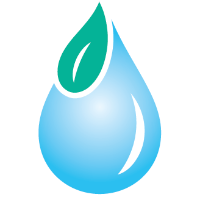Water for Food Global Institute, Daugherty

Daugherty Water for Food Global Institute: Faculty Publications
Date of this Version
2019
Document Type
Article
Abstract
Nebraska’s agricultural production is diverse and vast, ranking the state fourth in total value of agricultural products in the U.S. The state is a national leader in terms of agricultural production: it is the third largest producer of corn and second largest in cattle production. Nebraska is also the second largest producer of ethanol and distillers’ grains. The production and use of these three commodities are highly interlinked. Corn is a major input in livestock feed and the ethanol industry. Ethanol plants then produce distillers’ grains as a co-product that is also used as livestock feed, thus forming what the Nebraska Corn Board refers to as “Nebraska’s Golden Triangle.” The main objective of the current report is to assess the water productivity of crops and livestock products, and the water, energy and carbon footprint of ethanol produced from corn. The findings show that:
• The observed shift to more efficient irrigation systems (eg. changing from gravity to center pivot systems) and setting regulatory limits on pumping for irrigation has helped to reduce the field level irrigation application depth in three Natural Resources Districts (NRDs): Central Platte, Lower Niobrara, and Tri-Basin. The irrigation application rate in the three NRDs studied has dropped on average 20% for cornfields and 8% for soybean fields between 2004 and 2013.
• The yield and modeled water productivity (WP) of both irrigated and rainfed corn decreases from eastern to western Nebraska. The drop in irrigated corn yield in western Nebraska is due to a shorter growth season in the west compared to eastern part of the state due to altitude
• The modeled water productivity of the two major crops, corn and soybeans, has increased over the years. Between 1990 and 2014, the average WP of corn and soybeans has increased 1.7 and 1.8 times, respectively. These increases closely follow the increase in the crop yields in Nebraska.
• There are WP gaps for corn and soybeans that, if targeted investments and improvements are feasible, will help reduce pressure on water resources.
• Livestock production (swine and cattle, and eggs) has increased considerably between 1960 and 2016. The increase in livestock production has been accompanied by an increase in animal feed demand. The rate of feed demand has risen more slowly than the rate of increased production, due to increases in livestock productivity.
• From 1960 to 2016, the WP of livestock products (beef, pork, chicken meat, turkey meat, milk, and eggs) increased considerably, from 1.8 times for beef to 5.1 times for milk.
• Setting benchmarks, estimating the WP gaps, and identifying the critical factors affecting WP are potential future areas of research and investment to enhance the WP of livestock products.
• Bioethanol from Nebraska’s corn produces roughly two times more energy output for every unit of fossil fuel input and reduces greenhouse gas (GHG) emission by 53% relative to gasoline.
Included in
Environmental Health and Protection Commons, Environmental Monitoring Commons, Hydraulic Engineering Commons, Hydrology Commons, Natural Resource Economics Commons, Natural Resources and Conservation Commons, Natural Resources Management and Policy Commons, Sustainability Commons, Water Resource Management Commons


Comments
Published by Robert B. Daugherty Water for Food Global Institute